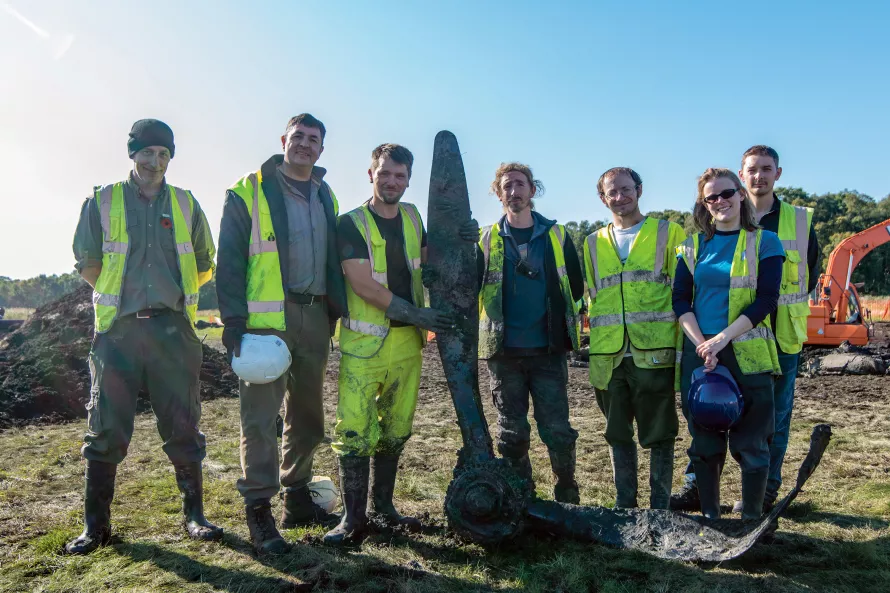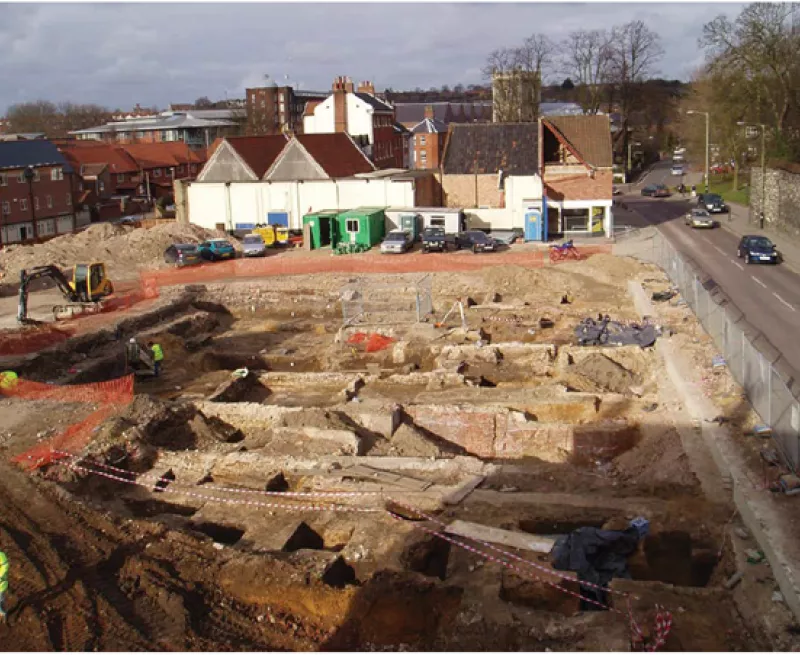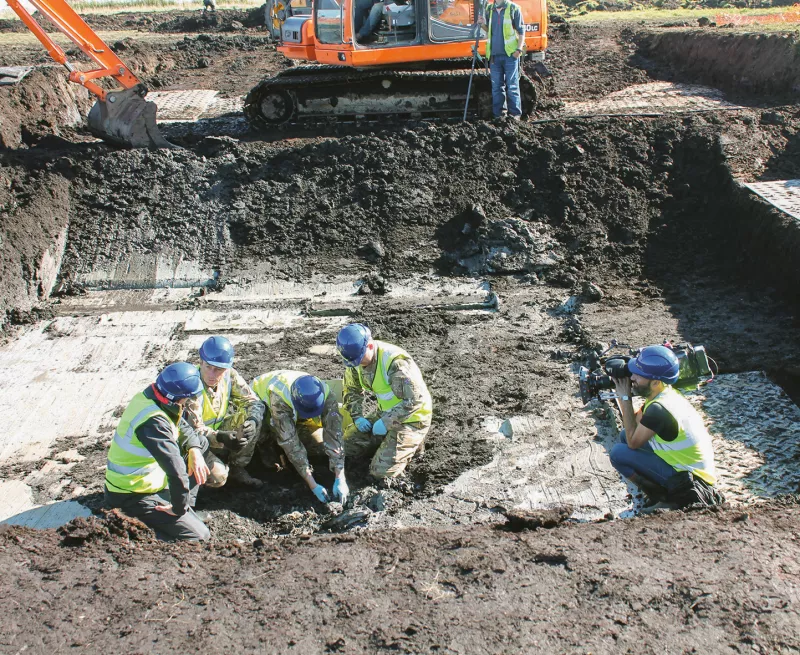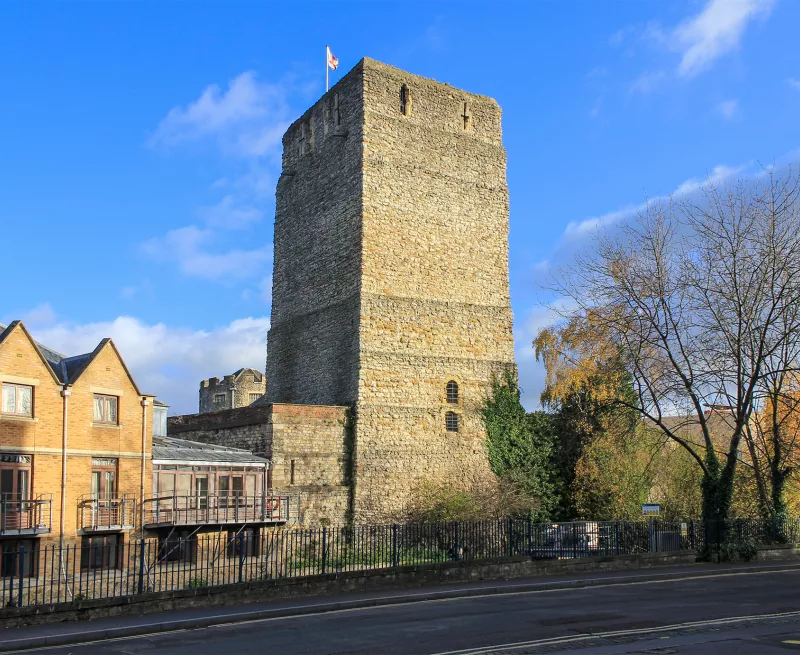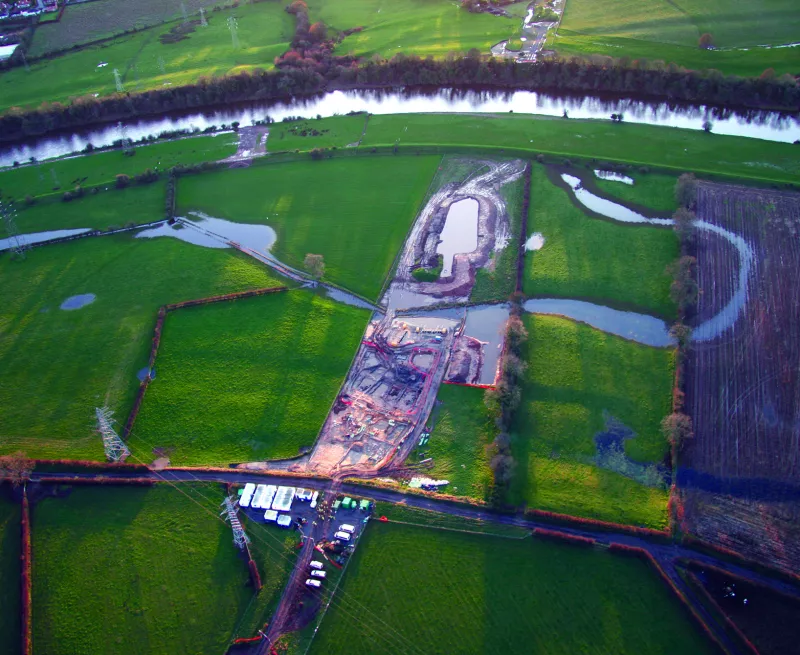Oxford Castle was built in 1071 at the west end of the thriving late Saxon town, in the classic motte-and bailey form, and was the county castle throughout the medieval period. Largely abandoned by the late 16th century, it continued to serve as the county gaol, with new prison buildings added in the 18th century and 19th centuries.
Our excavations uncovered remarkable evidence of the development of this corner of the town, including sherds of very early Stamford ware pottery, datable to the foundation and earliest years of the burh at Oxford, perhaps as early as the late 9th century. We revealed the 10th-century rampart of the late Saxon town (or burh) and its later facing wall (images 2 and 3), with evidence for re-building likely to be a response to the threat of Viking attacks.
We found burials and two large timber buildings which mean there may have been a high-status residence here in the late Saxon period, perhaps the estate centre of an individual of the rank of thegn, or above. We also showed that St George’s Tower – a massive stone tower that still stands today - may have been part of an associated church at the West Gate of the Saxon town. Late Saxon cellar pits were found that are probably the remains of buildings that were demolished to make way for the building of the Norman castle.
The site is still dominated by the castle’s massive Norman motte. We revealed the foundations of the tower that once stood on top of it, as well sections across the massive bailey rampart, and the deep, waterlogged ditches that surrounded both the motte and the bailey. We also found parts of the castle’s later defensive wall, towers and gates, and buildings within the bailey. The castle was briefly refortified in 1650-51 during the Parliamentary occupation of Oxford in the English Civil War, and some evidence was recovered for the creation of a short-lived gun platform on top of the motte, and a sally port (a secure, controlled entry way) within the western defences.
Between the late medieval period and the middle of the 18th century the buildings of the former castle chapel were used to house the prisoners at the county gaol, and a number of prisoner burials were found in the motte ditch, dating from the late 15th to the 18th centuries. Several skeletons, probably of executed felons, had been dissected (or ‘anatomised’) prior to burial. There was huge excitement at the time of discovery as the burials were linked to the notorious ‘Black Assizes’ of 1577, an outbreak of ‘gaol fever’ (probably typhus) which killed 300 people including the judges, the clerk, Lord Lieutenant, Sherriff, and coroner. A ‘saucy foul mouthed bookseller’ called Roland Jenkes was convicted of the crime of ‘scandalous words uttered against the queen’, and cursed the court, jury and city, apparently leading to the deaths; in reality, he probably passed on the disease having been himself infected in the unsanitary and crowded gaol. He survived to lead a long life as a baker in France.
Purpose-built prison buildings were built in the late 18th century, and we recorded these in in detail, along with the mid-Victorian ‘separate system’ A Wing, which now houses the Malmaison hotel (images 4 and 5).
Notable finds include facetted chalk objects that may have been used in parchment making, and important collections of late 11th- and early 12th-century shoes from the motte ditch. Bird bone from the late 11th-century fills of the motte ditch included crane, partridge, white stork, quail and swan, reflecting the high status of the castle’s occupants.

